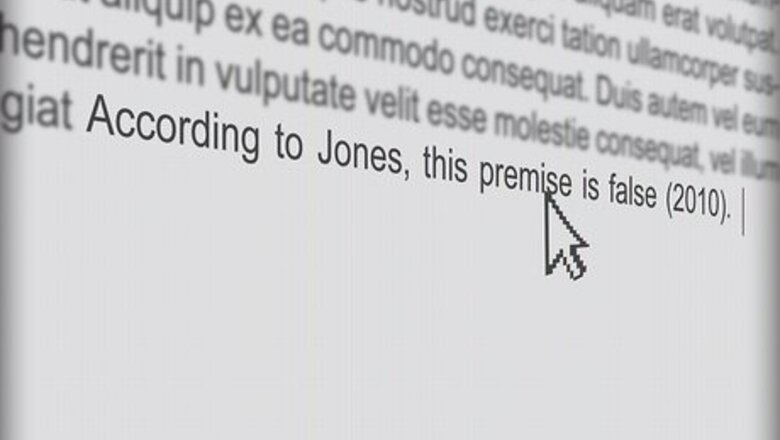
views
APA
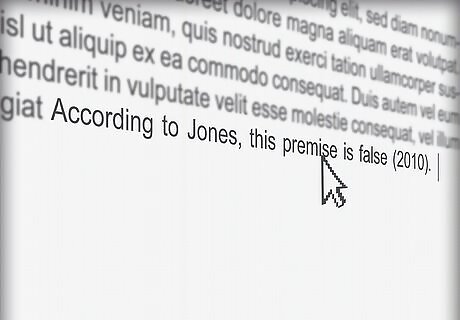
Introduce the author in the sentence. Whenever it is available, you must include the last name of the author or authors responsible for the work. One way to name the author is to introduce him or her in the sentence before you introduce the information provided by that author. According to Jones, this premise is false (2010). A study by Smith, Doe and Rowell indicates that this is only a misconception (2002).
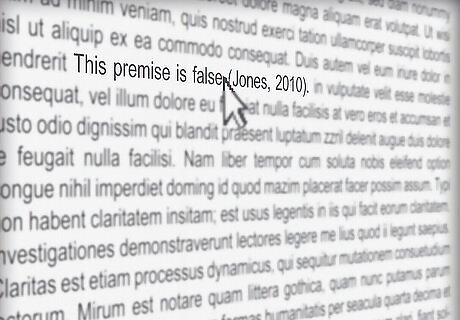
Alternatively, name the author in the parentheses. If you do not introduce the author or authors in the sentence, provide the last names in parentheses after the borrowed information. For works with multiple authors, separate the last two names with an ampersand (&). This premise is false (Jones, 2010). Even though it was previously accepted as fact, this is only a misconception (Smith, Doe & Rowell, 2002).
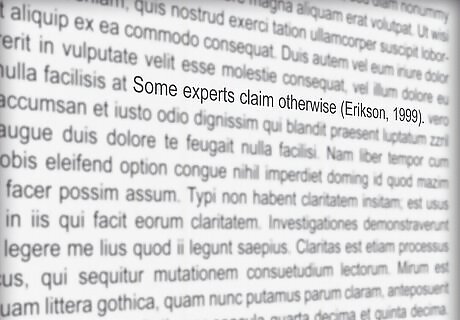
Specify the year of publication. Whenever available, include the date of publication in parentheses following the borrowed information. If the author's name is included in parentheses, as well, separate the two with a comma. If no date is provided, indicate as much with the abbreviation “n.d.” Erikson claims otherwise (1999). Some experts claim otherwise (Erikson, 1999). Research shows that this long-held belief is “nothing more than an old wives' tale, at best” (Johnson & Smith, n.d.).
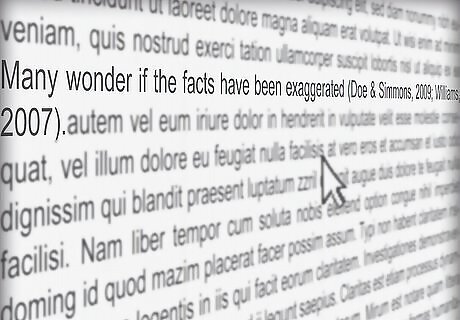
Separate multiple citations with semicolons. If the quoted or paraphrased information comes from multiple sources, cite the author and year for both sources in parentheses as normal and separate the individual sources with semicolons. Alphabetize the studies as they would appear in your reference list. Many wonder if the facts have been exaggerated (Doe & Simmons, 2009; Williams, 2007).

Substitute the title for the author's name, if needed. If the author's name is not provided, include the title of the book in italics or the title of the article in quotation marks. Follow the title with the year of publication as usual. If not publication date is provided, use the abbreviation "n.d." Recent research on the brain supports these claims (“New News about the Brain,” n.d.). The study of psychology continues to expand in this area (Psychological Discoveries, 2012).
MLA
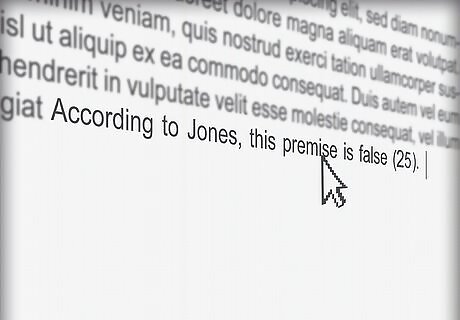
Introduce the author in the sentence. If the author or authors are provided, the last names must be included in the citation. One way to cite the author is to introduce him or her in the sentence prior to the quotation or paraphrase. According to Jones, this premise is false (25). A study by Smith, Doe and Rowell indicates that this is only a misconception (98-100).
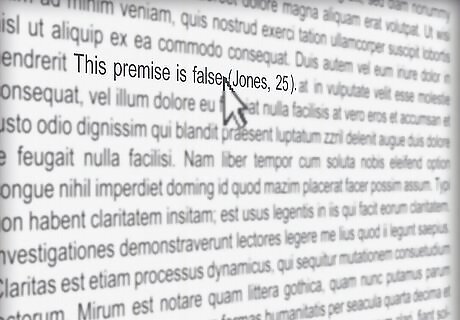
Alternatively, name the author in parentheses. If you do not introduce the authors of the work in the sentence itself, you must state the last name or names in parentheses. For works with multiple authors, separate the final two authors with the word “and.” This premise is false (Jones, 25). Even though it was previously accepted as fact, this is only a misconception (Smith, Doe, and Rowell, 98-100).
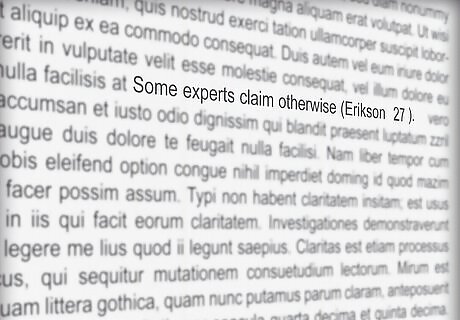
Specify the page range on which the information can be found. List the page number or numbers the cited information can be found on in parentheses. If using a page range, separate the page numbers with a hyphen. If using page numbers that are not part of a range, separate the numbers with a comma. Do not separate the author's name and the page number with a comma. Erikson claims otherwise (27). Some experts claim otherwise (Erikson 27). Research shows that this long-held belief is “nothing more than an old wives' tale, at best” (Johnson and Smith 28-31). New information clarifies this situation (Doe 18, 23).
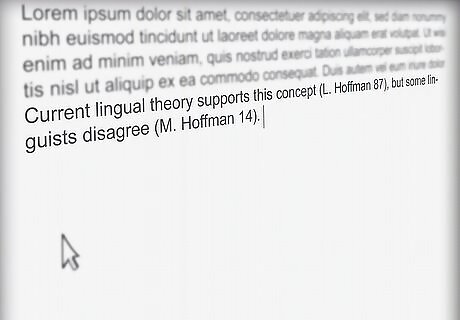
Provide a first initial for different authors that share the same last name. If you need to cite two works written by two different authors with the same last name, indicate the two different authors by including a first initial as well as the last name. Current lingual theory supports this concept (L. Hoffman 87), but some linguists disagree (M. Hoffman 14). L. Hoffman supports this concept (87), but M. Hoffman disagrees (14).
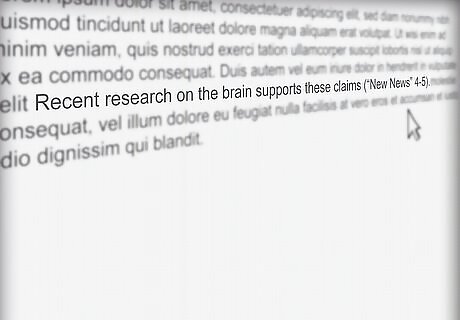
Use the title if no author is available. If the author of a source is unavailable, use a shortened form of the title, instead. Put articles and short works in quotation marks and books or other long works in italics. Provide a page number as usual. Recent research on the brain supports these claims (“New News” 4-5). The study of psychology continues to expand in this area (Psychological Discoveries 58).
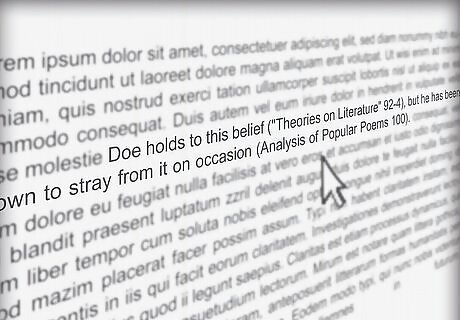
Specify the title when using more than one work by the same author. If you are citing information from multiple works written by the same author, include the title of the work in parentheses, followed by the page number. Use quotation marks for short works and italics for long works. You can introduce the name of the author in the sentence or you can specify the author in parentheses before listing the title, separating the author and the title with a comma. Doe holds to this belief ("Theories on Literature" 92-4), but he has been known to stray from it on occasion (Analysis of Popular Poems 100). This theory is “too new to hold much ground” (Analysis of Popular Poems 100), but it does show considerable promise (Doe, "Theories on Literature" 92-4).
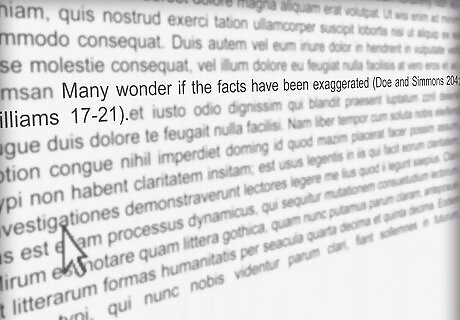
Separate multiple citations with a semicolon. If borrowed information comes from more than one source, cite each source in parentheses as usual and separate the individual sources with semicolons. Many wonder if the facts have been exaggerated (Doe and Simmons 204; Williams 17-21).
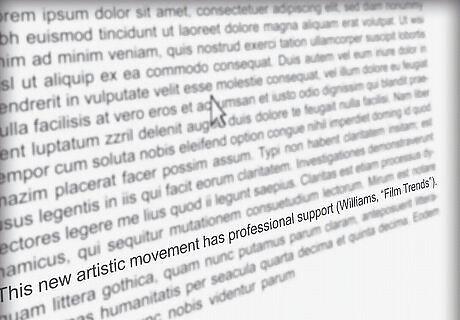
Name the author and website if using an Internet source. Non-print sources do not have standard page numbers. Instead of providing a page number or paragraph number, indicate the source by specifying the author's name and the name of the article or website. Both the author and website name can be included either in parentheses or in the sentence. You should have at least one of the two pieces of information in parentheses, but you can also include both pieces of information in parentheses, separated with a comma. Williams firmly states his support for this new artistic movement (“Film Trends”). This new artistic movement has professional support (Williams, “Film Trends”).
Chicago
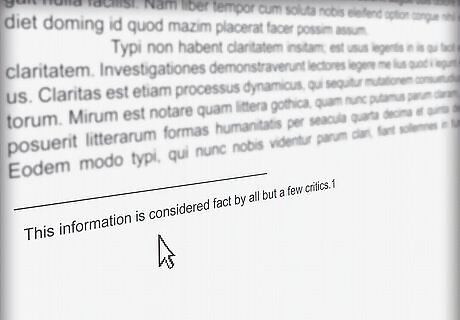
Use footnotes or endnotes. Typically, in-text citations are indicated through the use of footnotes or endnotes. Immediately after the punctuation mark that follows the borrowed information, mark the citation with a superscript number. The number should correspond to the present number of citations used in the text. You may introduce the name of the author in the sentence, but it is not necessary. This information is considered fact by all but a few critics.1 Doe believes this to be false.2
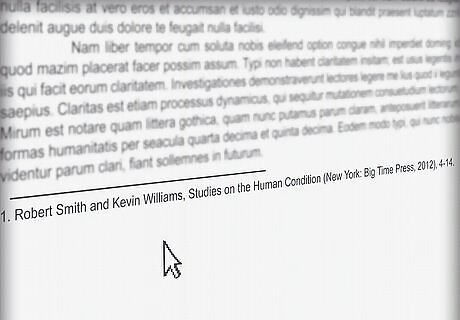
Provide a full citation in the first footnote. At the end of the page or the end of the paper, cite the author's first and last name and the name of the article. Include the author's name even if you mentioned it in the text itself. Following this information, indicate the city of publication, the name of the publisher, and the year of publication in parentheses. Immediately following this, include the page number on which the borrowed information can be found. 1. Robert Smith and Kevin Williams, Studies on the Human Condition (New York: Big Time Press, 2012), 4-14. 2. John Doe, “A New Perspective” (New York: Major Journal, 2011), 18.
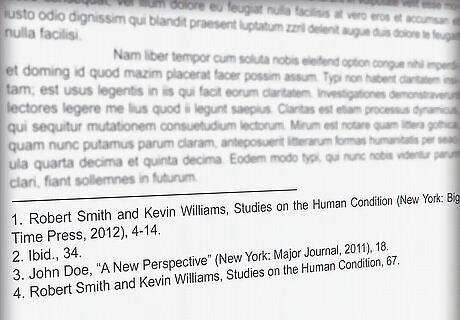
Abbreviate the citation in following footnotes. If you have already cited a source once, abbreviate it in any subsequent footnotes. When a citation immediately follows one from the same source, abbreviate all information except for the page number with the Latin abbreviation "Ibid." When a citation from the same source is separated by other sources, include the last name of the author, the title of the work, and the page number. 1. Robert Smith and Kevin Williams, Studies on the Human Condition (New York: Big Time Press, 2012), 4-14. 2. Ibid., 34. 3. John Doe, “A New Perspective” (New York: Major Journal, 2011), 18. 4. Robert Smith and Kevin Williams, Studies on the Human Condition, 67.
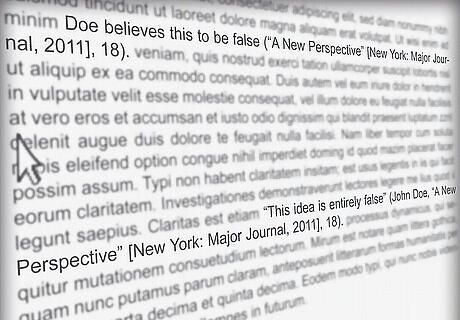
Include a parenthetical citation if no notes are used. If your instructor has stated that you should not use footnotes or endnotes, provide the same citation information in parentheses immediately following the borrowed information and before the closing punctuation. Include the full name of the author, the title of the work, the publication city, the name of the publisher, the date of publication, and the page number. Doe believes this to be false (“A New Perspective” [New York: Major Journal, 2011], 18). “This idea is entirely false” (John Doe, “A New Perspective” [New York: Major Journal, 2011], 18).
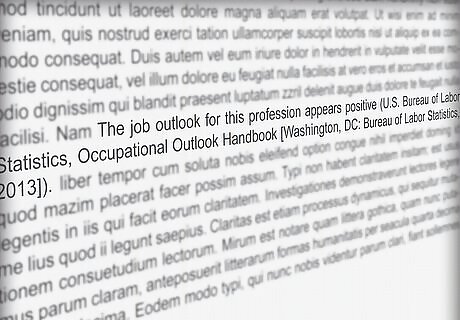
Name the organization if the work has a corporate or government author. If a corporation is responsible for a certain source rather than an individual author, replace the author's name with the corporation name. The job outlook for this profession appears positive (U.S. Bureau of Labor Statistics, Occupational Outlook Handbook [Washington, DC: Bureau of Labor Statistics, 2013]). 18. U.S. Bureau of Labor Statistics, Occupational Outlook Handbook (Washington, DC: Bureau of Labor Statistics, 2013).




















Comments
0 comment